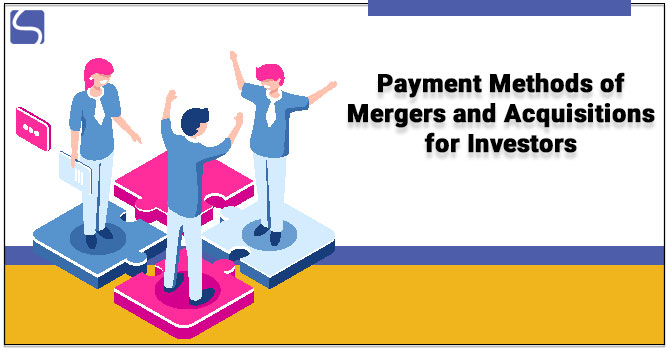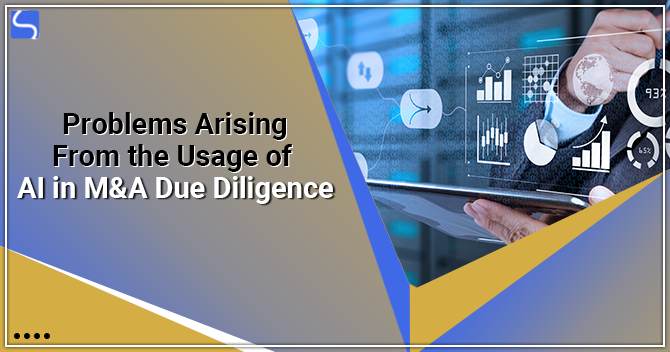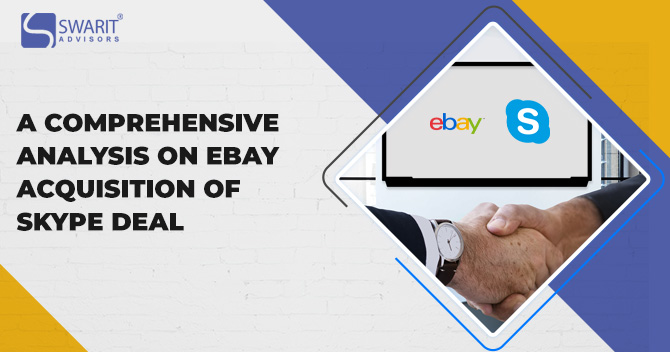Payment Methods of Mergers and Acquisitions for Investors – A Complete Guide

Karan Singh | Updated: Apr 15, 2021 | Category: Mergers and Acquisitions
Selection of a suitable Mergers and Acquisitions Payment overlays the roadmap for successful Merger and Acquisition (M&A). Payment methods of Mergers and Acquisitions consist of leverage payment, security, and cash payment. The different payment methods of Mergers and Acquisitions have other impacts on the monetary status, capital structure[1], and control of the purchasing company after M&A. Payment method also impacts the performance of Mergers and Acquisition (M&A). In this blog, we will discuss payment methods of Mergers and Acquisitions for investors.
Table of Contents
Mergers and Acquisition – An Overview
Before we discuss different payment methods of Mergers and Acquisitions for investors, let us first understand the meaning of Mergers and Acquisitions. M&A is the way businesses opt to extent exponential heights and continue to create attention. The Indian M&A sector works in a similar fashion and has noticed several huge Merger and Acquisition deals in the last few years in the insurance, banking, and telecom areas. Hence, over a period, Merger and Acquisition has become a vital part of the Indian economy.
Moreover, from time to time, Merger and Acquisition are misunderstood as one since both the words denote the consolidation of two or more companies. But, they finish opposites in terms of their execution.
The word “Merger” means combining two or more entities that agree to combine and make a new company structure. Further, the process of merger is accomplished with the intent to increase business growth and increase its reach and goodwill. Whereas, Acquisition is an act where an acquirer company purchases a target company by way of a legal agreement.
Types of Merger in Companies
- Vertical Merger: It is referred to as a merger of two or more entities that deliver numerous chain functions for common goods or services. Usually, the merger is caused to increase synergies, acquire more control of the supply chain process, and increase its impression.
- Horizontal Merger: It comes to light when companies operating in the same industry merge together. This horizontal merger aims to use scale economies and exploit cost-based interactions efficiently.
- Market Extension Merger: It takes place between two entities that deal in a similar product but in different markets. The primary objective of this merger is to make sure that the merging companies can get access to a larger marketplace.
- Conglomerate Merger: It refers to a merger between organizations that are involved with various business activities. It consists of companies serving different operation areas, while combined conglomerate mergers consist of entities searching for market or product extensions.
- Product Extension Merger: It comes in between two entities that deal with similar products and operate in a similar market. This merger enables the merger companies to combine their products and get access to a vast market, which ensures that they earn huge profits.
Relevancy of Payment Methods of Mergers and Acquisitions for Investor and Acquirer Perspective
Such different M&A can be expressed by an investor to understand the aim and goal of the management. An acquirer may choose for Merger and Acquisition to unlock undisclosed value, access new areas, execute new technology, or prevent unfavourable government policies. Similarly, an investor can access Mergers’ payment methods and Acquisitions and value an acquirer offers for the target company.
Different Payment Methods of Mergers and Acquisitions
Payment methods of Mergers and Acquisitions refer to the financial tools used by the companies to complete the business transaction. The payment method of M&A consist of:
Security Payment
It refers to a payment method in which the acquiring company rolled out new securities for purchasing the valuable assets or shares of the target companies, and it consists of the following forms:
Share Payment: With this payment, the acquiring company rolled out new stocks for buying the stocks or assets of the target firms. Among which, the most broadly-used form is the share exchange by which buying company pays the share directly to the target entity to buyout stock and assets;
Bond Payment: With such payment, the acquiring companies issue a corporate connection to buy the assets or share of the target companies. As a payment method with Merger and Acquisition, this category of connection has a huge credit rating and negotiability.
Cash Payment
This method is broadly used all over business domains owing to its transparency and simplicity. For entities, putting cash upfront looks more consistent and straightforward as compared to other payment methods. Although cash is the most feasible payment method, it drops its relevancy when the transaction costs are too high.
LOB or Leveraged Buyout
It refers to a Payment method by which acquiring companies finance capital with Merger and Acquisition through raising debts. In this method, the acquiring companies take the forthcoming operating cash flow of target companies as a promise to increase debts to finance capital through investors and then buy out the target companies’ ownership with cash payment. When compared with bond payment, Leveraged Buyout leads to a higher capital cost, as the interest rate of bank loans is significantly higher than the cooperate bonds.
Significance of a share for Payment Methods of Mergers and Acquisitions
Conditions of the market play an essential role in M&A transactions. When a purchaser’s shares are overrated, management may pay with an exchange share for the stock. Such shares have essentially deemed a form of currency.
Since the shares are measured to price moderately higher than their present value, the acquirer is getting massive profit by paying with stock. If the share of the acquirer is considered underrated, the management may finish up by paying for the Acquisition with cash. By considering share as equal to currency, it would purchase more shares trading at a discount equivalent to inherent value to pay for the purchase.
In reality, there might be some extra factors as to why an entity would choose to pay with cash or share, and why the Acquisition is being considered, i.e. purchasing a firm with tax losses so that the same can be recognized quickly and the liability of tax of the acquirer is decreased suddenly.
- In a merger, two companies can enter into a contract to establish a new company, whereas, in the Acquisition, one firm buys another;
- How a Merger and Acquisition is paid often reveals how an acquirer sees the comparative value of the share price of the company;
- Merger and Acquisition can be paid by cash, equity or both combinations.
Conclusion
If cash is not practically appropriate, there are different methods to finance a Merger and Acquisition, many of which outcome in a unified transaction. Another way of payment is to use depends on the seller and the purchasers their respective asset values, debt liabilities, and share situations. Each financing method an M&A comes with their risks and promises, and it is the duty of parties to influence due diligence at the time of transaction.
Also, Read: What are the Documents Required for Mergers and Acquisitions?














